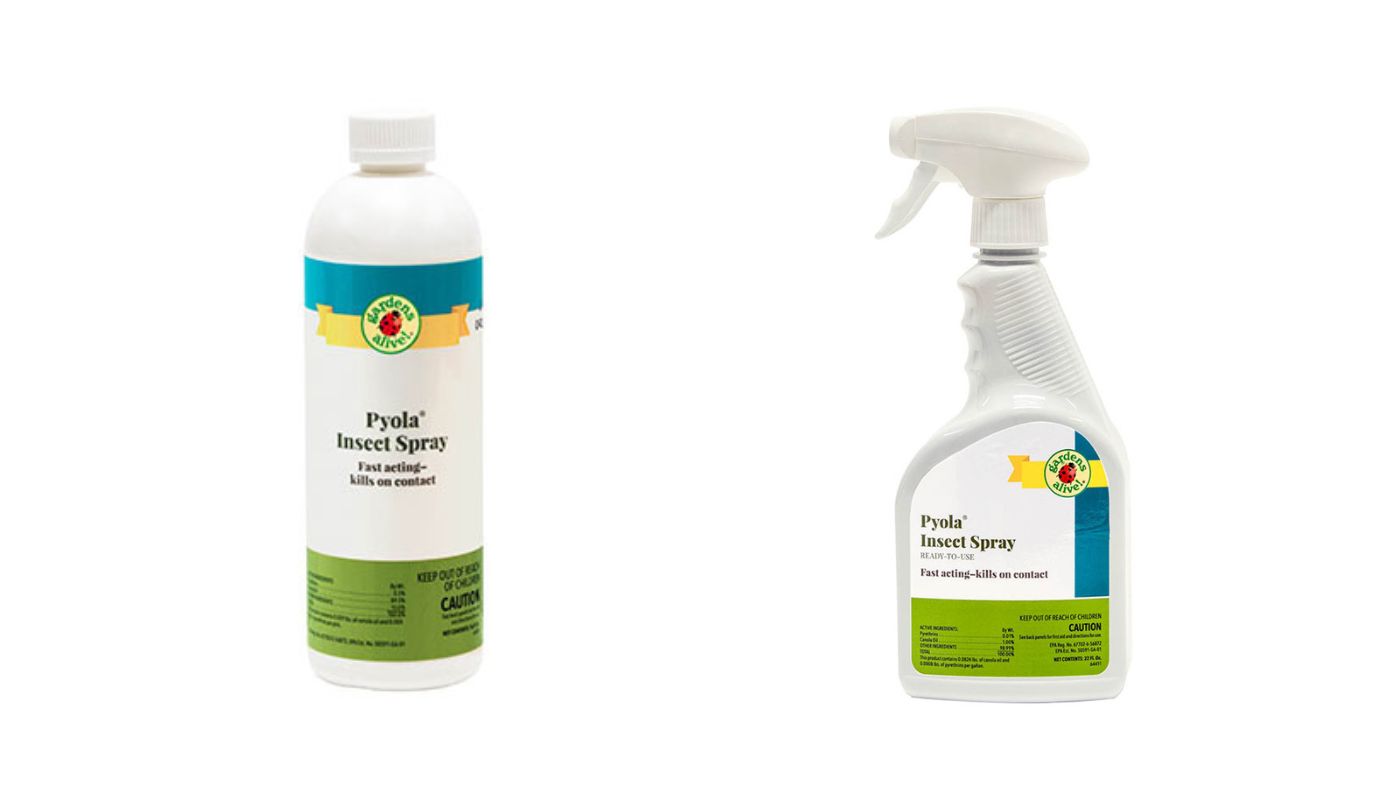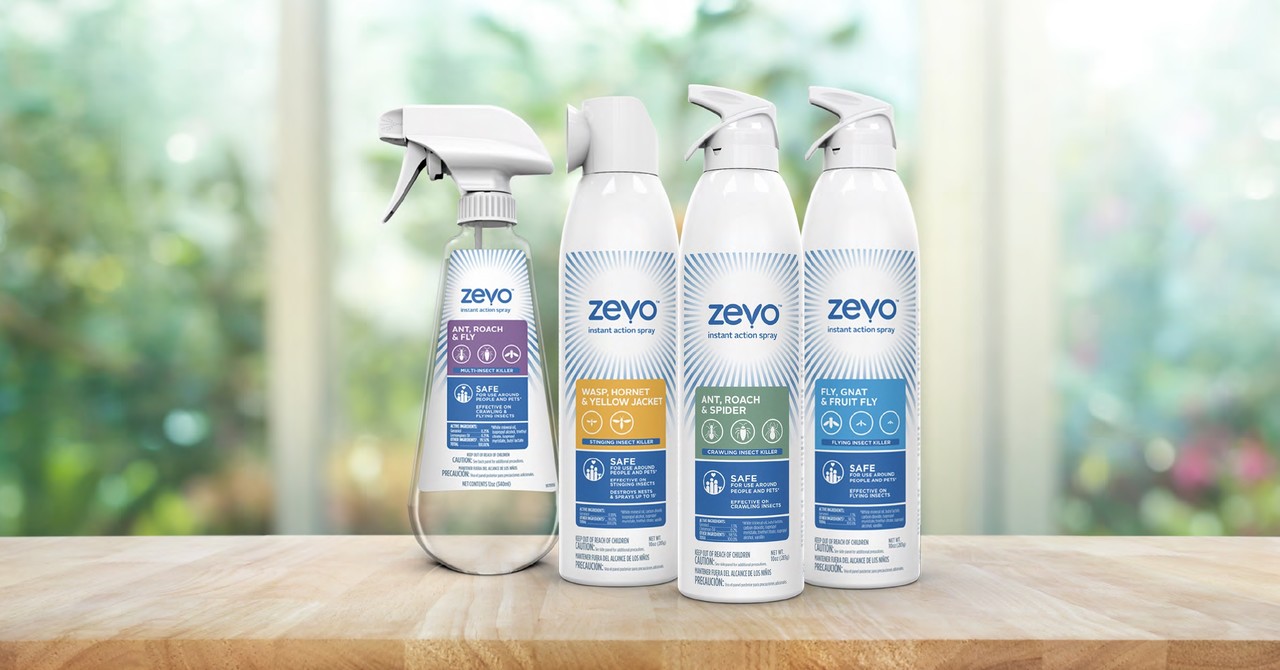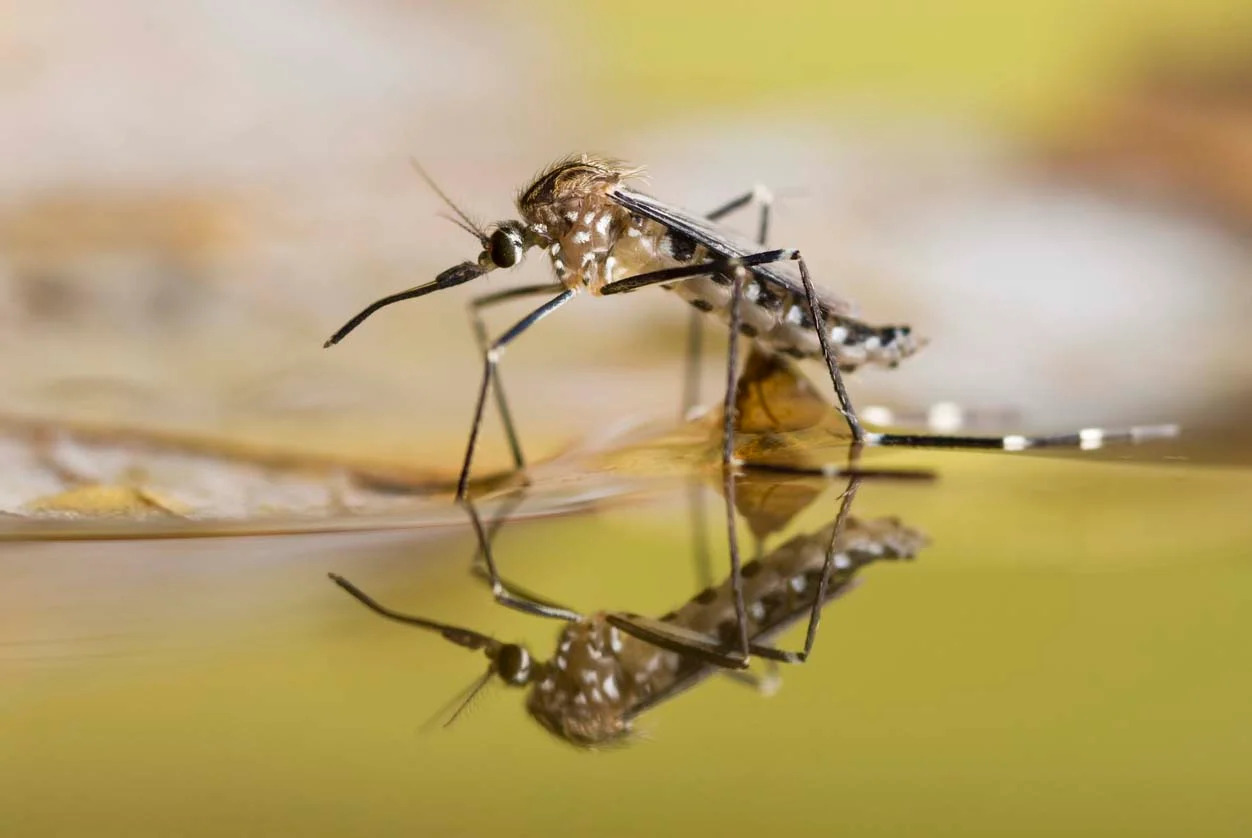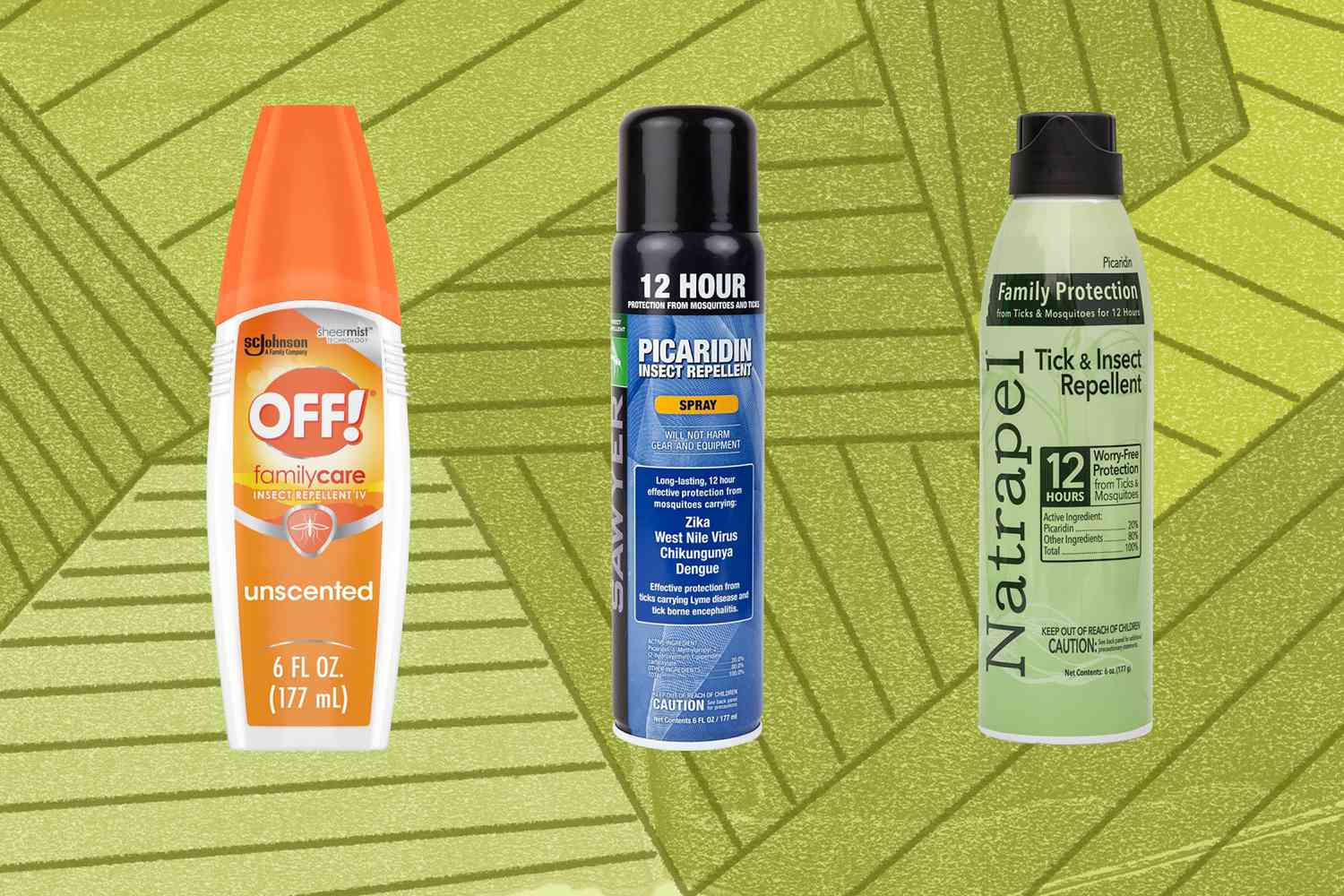Home>Gardening Tips and Tricks>Problem Solving>How To Eliminate Insects With Spray
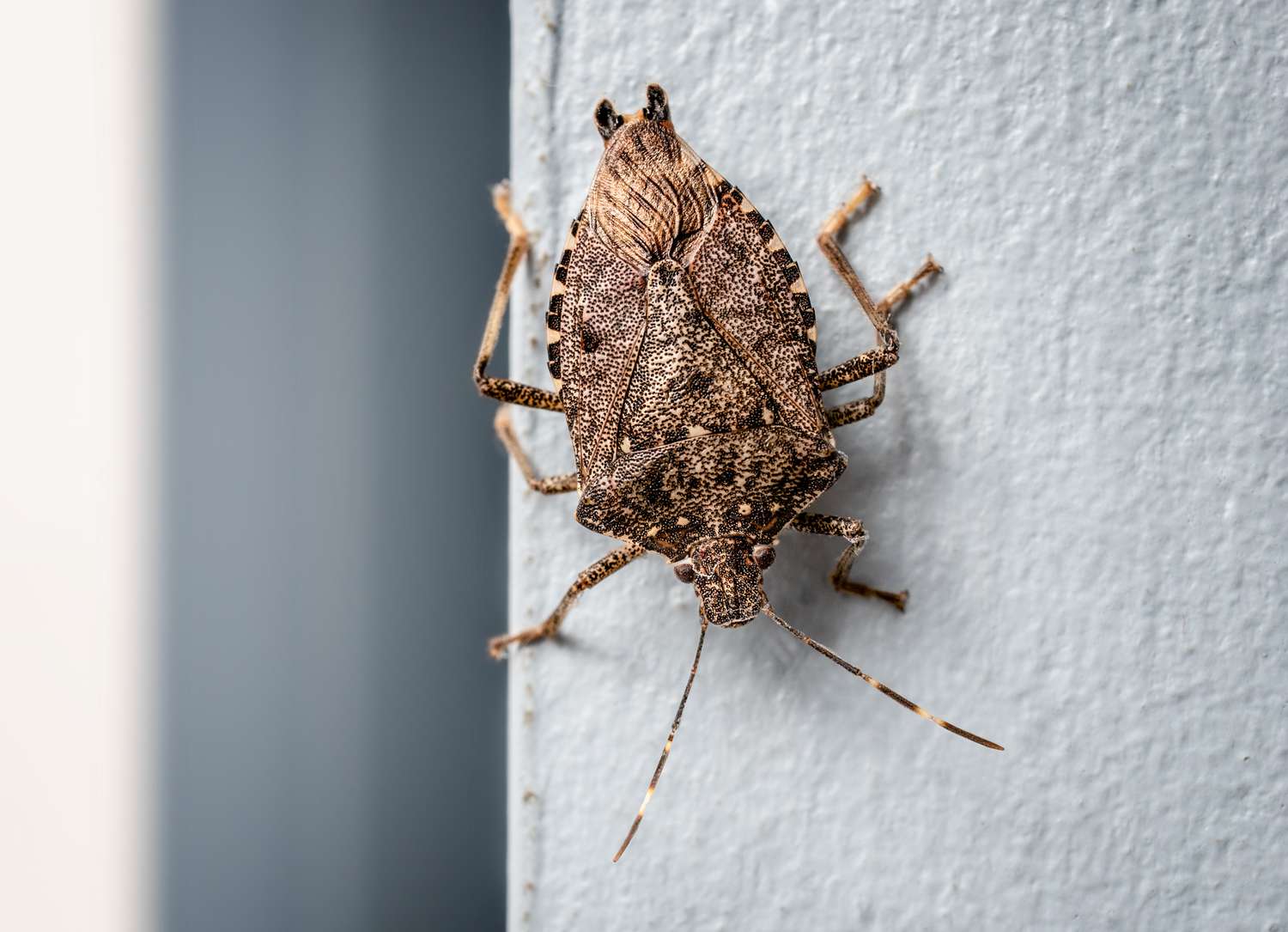

Problem Solving
How To Eliminate Insects With Spray
Modified: January 22, 2024
Get rid of insects in your home with our effective spray solutions. Solve your insect problems easily and efficiently with our expert tips and guidance.
(Many of the links in this article redirect to a specific reviewed product. Your purchase of these products through affiliate links helps to generate commission for Chicagolandgardening.com, at no extra cost. Learn more)
Table of Contents
Introduction
Insects are a common nuisance that can disrupt our daily lives and cause various problems, from irritating bites to damaging our homes and gardens. Dealing with these pesky creatures can be a real challenge, but with the right tools and knowledge, you can effectively eliminate them. One of the most popular methods for getting rid of insects is using spray. Insect sprays are widely available and can be a convenient and efficient solution to combat infestations.
In this article, we will discuss how to effectively eliminate insects using spray. We will delve into the different types of insects you may encounter, the importance of choosing the right insect spray, and how to prepare for the elimination process. We will also provide tips on applying the spray effectively, along with precautions and safety measures to ensure a successful outcome. Additionally, we will explore natural alternatives to insect spray for those who prefer a more environmentally friendly approach.
By the end of this article, you will be equipped with all the necessary knowledge to tackle insect infestations and enjoy a bug-free environment. Let’s dive in and discover the best strategies to eliminate insects with spray effectively.
Understanding Different Types of Insects
Before you can effectively eliminate insects using spray, it’s essential to understand the specific types of insects you’re dealing with. Different insects have different behaviors, habitats, and vulnerabilities, and knowing their characteristics will help you choose the most appropriate spray and application method. Here are some common types of insects you may encounter and how to identify them:
- 1. Ants: Ants are social insects that live in colonies. They are typically small and can be found both indoors and outdoors. Look for trails of ants and identify their entry points to effectively target them with spray.
- 2. Mosquitoes: Mosquitoes are notorious for their irritating bites and ability to transmit diseases. They lay their eggs in stagnant water, so eliminating standing water sources and using mosquito repellent sprays can help control their population.
- 3. Flies: Flies are often found around garbage, decaying matter, and food sources. They can be carriers of diseases, so controlling their population is crucial. Fly sprays are specifically formulated to target flies and are available in various forms, such as aerosols and traps.
- 4. Cockroaches: Cockroaches are nocturnal insects that thrive in warm and moist environments. They can spread diseases and contaminate food, making them a significant concern. Cockroach sprays are designed to kill these resilient pests and disrupt their breeding cycles.
These are just a few examples of common insects you may encounter. Other pests, such as spiders, fleas, and bed bugs, require specific treatments for effective elimination. Identifying the type of insect you’re dealing with will enable you to choose the appropriate spray and tailor your approach accordingly.
Choosing the Right Insect Spray
When it comes to eliminating insects, choosing the right insect spray is crucial for achieving effective results. With numerous options available on the market, it’s essential to consider certain factors to ensure you select the most appropriate spray for your specific needs. Here are some key considerations to keep in mind:
- 1. Targeted Insects: Different sprays are formulated to target specific types of insects. Read the label carefully to determine if the spray is designed to eliminate the particular pests you’re dealing with. Using a spray that is specifically tailored to the target insect will maximize its effectiveness.
- 2. Indoor or Outdoor Use: Some insect sprays are suitable for indoor use, while others are designed for outdoor use. Consider where you’re experiencing the infestation and choose a spray that is appropriate for that specific environment.
- 3. Safety and Environmental Considerations: Take into account any safety precautions or environmental concerns associated with the insect spray. Look for products that are labeled as safe for children, pets, and the environment. Avoid sprays that contain harsh chemicals that may pose health risks.
- 4. Application Method: Consider the ease of application when choosing an insect spray. Some sprays come in aerosol cans, while others may require dilution and application with a sprayer. Choose a method that you are comfortable with and that allows for effective coverage of the affected areas.
- 5. Reviews and Recommendations: Research and read reviews from other users to get feedback on the effectiveness and reliability of the insect spray. Look for testimonials or recommendations from reputable sources to ensure you’re selecting a reliable product.
By taking these factors into account, you can make an informed decision when choosing the right insect spray. Remember to always follow the instructions provided by the manufacturer for safe and effective use of the product.
Preparing for Insect Elimination
Before you start using insect spray to eliminate pests, it’s important to properly prepare the area to ensure maximum effectiveness. Taking the time to prepare will help you target the infestation more efficiently and minimize the chances of reinfestation. Here are some steps to follow when preparing for insect elimination:
- 1. Identify Infested Areas: Inspect your surroundings and identify the areas where the insects are most prevalent. Look for telltale signs like nests, trails, or droppings. Identifying the key infested areas will allow you to focus your efforts on those specific locations.
- 2. Remove Clutter and Debris: Insects often hide in cluttered spaces and debris, so declutter and clean the affected areas. Remove any unnecessary items, such as old newspapers or cardboard boxes, as they can provide hiding spots for pests.
- 3. Seal Entry Points: Determine how insects are gaining access to your home or outdoor spaces and seal any entry points. Use caulk or weatherstripping to seal gaps and cracks in windows, doors, and walls. This will prevent further infestations and contain the insects within a specific area.
- 4. Clean and Sanitize: Thoroughly clean and sanitize the area to eliminate any attractants or food sources for the insects. Pay special attention to kitchen areas, garbage cans, and pet food storage. Proper sanitation will disrupt their breeding cycles and reduce their ability to survive.
- 5. Protect Yourself: Prioritize your safety by wearing protective clothing, such as gloves and masks, to avoid direct contact with the spray and potential allergens. Read the safety instructions on the spray bottle and follow them diligently to prevent any adverse reactions.
By preparing the area before applying insect spray, you increase the effectiveness of the treatment and create a more inhospitable environment for the pests. This will help ensure that your efforts yield the best possible results in eliminating the insects and preventing future infestations.
Applying the Spray Effectively
Applying insect spray is a critical step in the process of eliminating pests. To achieve the best results, it’s important to use the spray properly and apply it effectively. Here are some tips to help you apply insect spray efficiently:
- 1. Read the Instructions: Before using the spray, carefully read and follow the instructions provided by the manufacturer. Pay attention to the recommended dosage, application method, and any safety precautions.
- 2. Targeted Application: Direct the spray specifically at the areas where you have identified insect activity or infestation. Focus your efforts on cracks, crevices, entry points, and hiding spots where insects tend to gather or nest.
- 3. Even Distribution: Ensure an even distribution of the spray by moving the nozzle in a sweeping motion. Avoid spraying excessively, as this can lead to wastage and risks overexposure to harmful chemicals.
- 4. Reach Hard-to-Access Areas: Use extension wands or nozzles to reach difficult-to-access areas, such as corners, high ceilings, and tight spaces. This ensures thorough coverage and increases the effectiveness of the spray application.
- 5. Repeat Treatments: In some cases, a single application of insect spray may not completely eliminate the infestation. If the problem persists, repeat the treatment according to the recommended intervals or as instructed on the spray bottle. This helps break the insect’s life cycle and ensures thorough eradication.
- 6. Time it Right: Consider the timing of the spray application. Some insect sprays may be more effective when applied during specific times of the day when insects are most active. Follow the guidelines provided by the manufacturer for optimal timing.
By applying insect spray effectively, you maximize its potential to eliminate pests and minimize the chances of reinfestation. Remember to always exercise caution, follow safety guidelines, and handle the spray with care to protect yourself and others from potential harm.
Precautions and Safety Measures
While insect sprays can be effective in eliminating pests, it’s important to prioritize safety when using these products. By following proper precautions and safety measures, you can protect yourself, your loved ones, and the environment from potential harm. Here are some key precautions to keep in mind:
- 1. Read and Follow Instructions: Thoroughly read and understand the instructions provided by the manufacturer before using the insect spray. Follow the recommended dosage, application method, and safety precautions to avoid any accidents or adverse reactions.
- 2. Ventilation: Ensure there is proper ventilation in the area where you’re applying the spray. Open windows and doors to allow fresh air to circulate. This helps minimize inhalation of fumes and reduces the risk of respiratory irritation.
- 3. Protective Gear: Wear appropriate protective gear, such as gloves, masks, and goggles, when handling and applying the insect spray. This protects your skin, eyes, and respiratory system from potential exposure to harmful chemicals.
- 4. Keep Children and Pets Away: Keep children and pets away from the sprayed area until the product has dried or the recommended exposure time has elapsed. This prevents accidental ingestion or direct contact with the spray.
- 5. Storage and Disposal: Store insect sprays in a cool, dry place, out of reach of children and pets. Follow the instructions for proper disposal of empty containers to minimize environmental impact.
- 6. Allergies and Sensitivities: Be aware of any personal allergies or sensitivities you or your family members may have to certain chemicals. If you experience any adverse reactions after using the spray, discontinue use immediately and seek medical advice if necessary.
By taking these precautions and adhering to safety measures, you can use insect sprays effectively while minimizing potential risks. It’s essential to prioritize safety and ensure the well-being of yourself and those around you.
Natural Alternatives to Insect Spray
If you prefer to avoid using chemical-based insect sprays, there are several natural alternatives that can help you effectively control pests. These alternatives are non-toxic, eco-friendly, and safe for use around children, pets, and the environment. Here are some natural methods you can try:
- 1. Essential Oils: Certain essential oils, such as citronella, lavender, peppermint, and tea tree oil, have insect-repellent properties. Dilute a few drops of the chosen essential oil with water in a spray bottle and apply it to the areas where insects are present.
- 2. Vinegar: Vinegar is a versatile natural ingredient that can repel insects. Mix equal parts vinegar and water in a spray bottle and use it to wipe down surfaces or spray in affected areas to deter pests.
- 3. Garlic and Chili Pepper Sprays: Create a homemade insect spray by blending garlic cloves and chili peppers with water. Strain the mixture and put it in a spray bottle. This solution can repel a variety of insects.
- 4. Diatomaceous Earth: Diatomaceous earth is a fine powder made from fossilized remains of algae. Sprinkle it in areas where insects are present, such as around entry points or in cracks and crevices. When insects come in contact with it, it dehydrates their exoskeletons and causes them to perish.
- 5. Physical Barriers: Use physical barriers like mesh screens, door sweeps, or caulking to seal windows, doors, and other openings. This prevents insects from entering your home or outdoor spaces.
- 6. Plant-based Repellents: Planting certain plants, such as citronella, lemongrass, basil, and mint, can help repel insects due to their natural fragrance. Place these plants in your garden or around outdoor seating areas to deter pests.
While natural alternatives can be effective, it’s important to note that their effects may vary and may not provide the same level of immediate control as chemical insect sprays. Regular application may be necessary for continued effectiveness.
By incorporating these natural alternatives into your pest control routine, you can maintain a pest-free environment while minimizing the potential risks associated with chemical-based insect sprays.
Conclusion
Insect infestations can be a frustrating and disruptive problem, but with the right knowledge and tools, you can effectively eliminate pests from your surroundings. Using insect spray is a popular method for eradicating insects, but it’s important to choose the right spray, apply it properly, and take necessary precautions.
Understanding the different types of insects and their behaviors allows you to target them more effectively. By choosing the appropriate insect spray and following the instructions, you can maximize its effectiveness and ensure the safety of yourself and your loved ones. Additionally, proper preparation, such as identifying infested areas and removing clutter, helps create a more conducive environment for insect elimination.
When applying the spray, take care to target the insects’ hiding spots and distribute the spray evenly. If needed, repeat the treatment to break the insect’s life cycle thoroughly. However, it’s important to follow safety measures, wear protective gear, and consider natural alternatives for those who prefer non-chemical options.
In conclusion, eliminating insects with spray requires a combination of knowledge, preparation, and proper application techniques. By incorporating these strategies into your pest control routine, you can effectively eliminate pests, create a safer environment, and enjoy a bug-free space.


